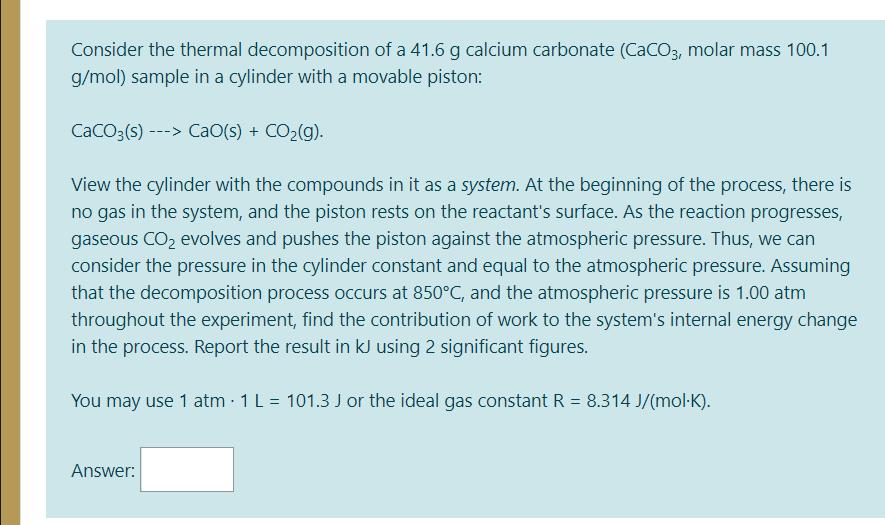Answered step by step
Verified Expert Solution
Question
1 Approved Answer
Consider the thermal decomposition of a 41.6 g calcium carbonate (CaCO, molar mass 100.1 g/mol) sample in a cylinder with a movable piston: CaCO3(s)

Consider the thermal decomposition of a 41.6 g calcium carbonate (CaCO, molar mass 100.1 g/mol) sample in a cylinder with a movable piston: CaCO3(s) ---> CaO(s) + CO2(g). View the cylinder with the compounds in it as a system. At the beginning of the process, there is no gas in the system, and the piston rests on the reactant's surface. As the reaction progresses, gaseous CO2 evolves and pushes the piston against the atmospheric pressure. Thus, we can consider the pressure in the cylinder constant and equal to the atmospheric pressure. Assuming that the decomposition process occurs at 850C, and the atmospheric pressure is 1.00 atm throughout the experiment, find the contribution of work to the system's internal energy change in the process. Report the result in kJ using 2 significant figures. You may use 1 atm 1L = 101.3 J or the ideal gas constant R = 8.314 J/(mol-K). Answer:
Step by Step Solution
★★★★★
3.54 Rating (161 Votes )
There are 3 Steps involved in it
Step: 1

Get Instant Access to Expert-Tailored Solutions
See step-by-step solutions with expert insights and AI powered tools for academic success
Step: 2

Step: 3

Ace Your Homework with AI
Get the answers you need in no time with our AI-driven, step-by-step assistance
Get Started


